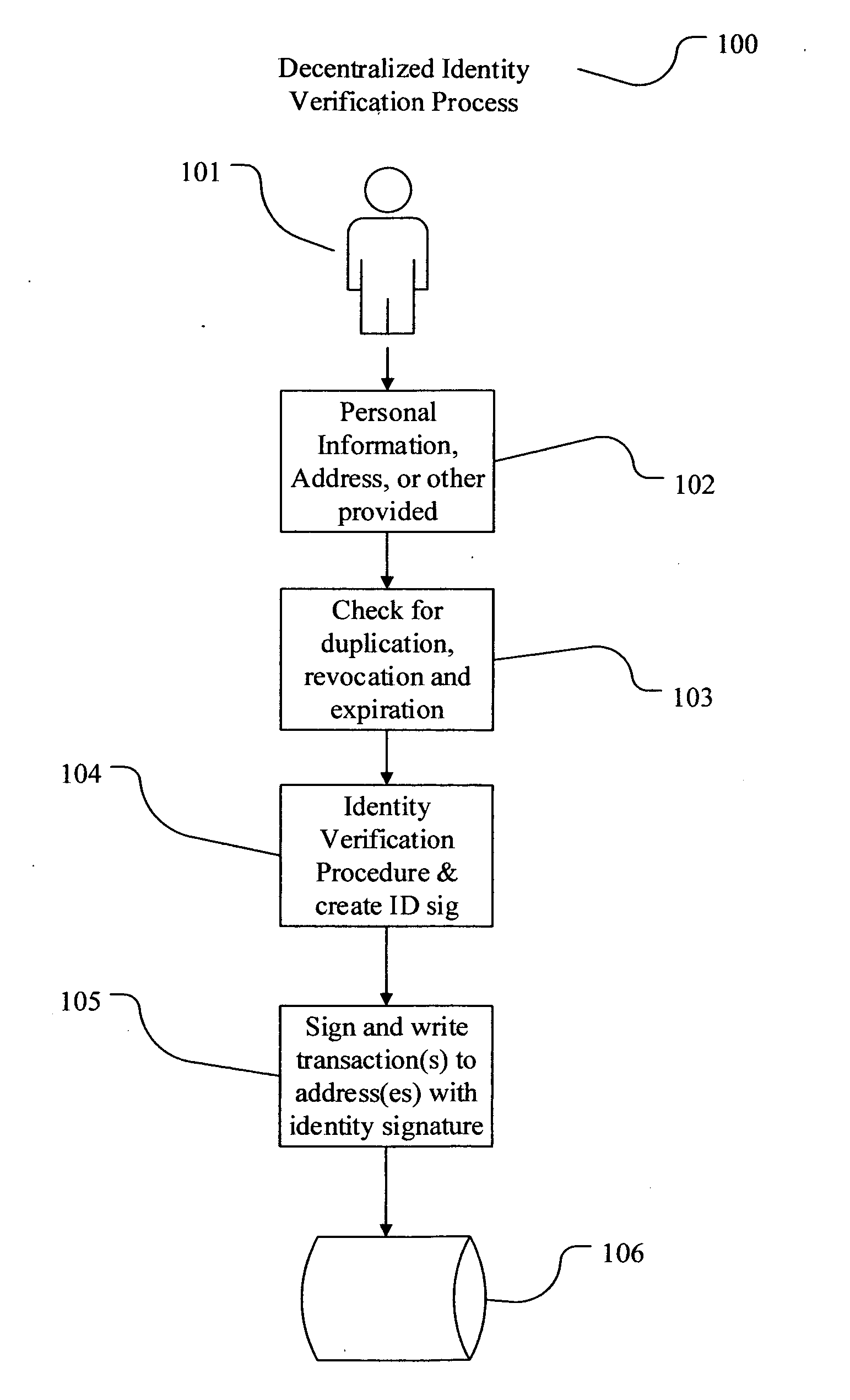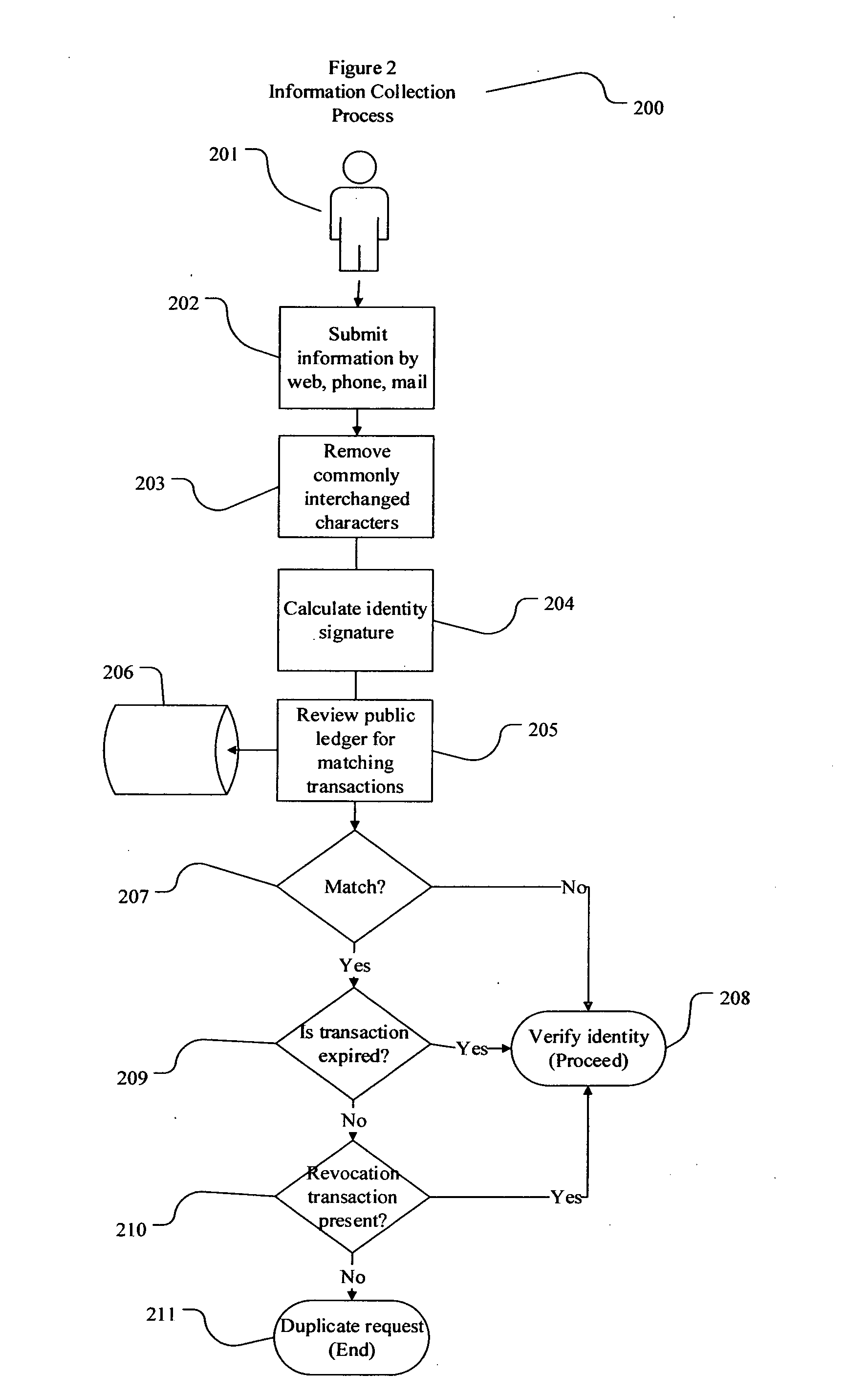Decentralized identity verification systems and methods
a decentralized, identity verification technology, applied in the field of decentralized identity verification systems and methods, can solve the problems of exponential increase in systemic risk, massive attack surface of hackers and organized criminals, and more complicated regulatory landscape of international transactions
- Summary
- Abstract
- Description
- Claims
- Application Information
AI Technical Summary
Benefits of technology
Problems solved by technology
Method used
Image
Examples
Embodiment Construction
[0027]The subject matter of embodiments of the present invention is described here with specificity to meet statutory requirements, but this description is not necessarily intended to limit the scope of the claims. The claimed subject matter may be embodied in other ways, may include different elements or steps, and may be used in conjunction with other existing or future technologies. This description should not be interpreted as implying any particular order or arrangement among or between various steps or elements except when the order of individual steps or arrangement of elements is explicitly described.
[0028]As used herein, the term “cryptocurrency address” is a logical address in a cryptocurrency protocol, typically an encoded output of a cryptographic hash function using the public key as the input, or as a digital currency public key in raw or encoded format. The term “cryptocurrency address” may be used interchangeably with the public key or cryptocurrency address derived ...
PUM
 Login to View More
Login to View More Abstract
Description
Claims
Application Information
 Login to View More
Login to View More - R&D
- Intellectual Property
- Life Sciences
- Materials
- Tech Scout
- Unparalleled Data Quality
- Higher Quality Content
- 60% Fewer Hallucinations
Browse by: Latest US Patents, China's latest patents, Technical Efficacy Thesaurus, Application Domain, Technology Topic, Popular Technical Reports.
© 2025 PatSnap. All rights reserved.Legal|Privacy policy|Modern Slavery Act Transparency Statement|Sitemap|About US| Contact US: help@patsnap.com



